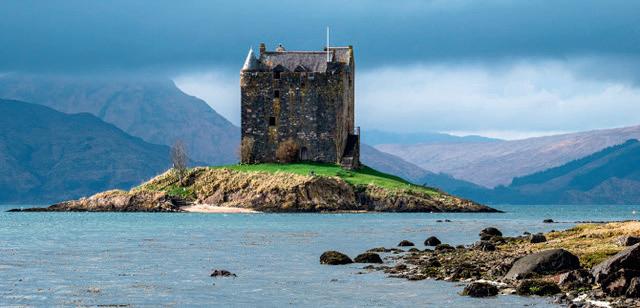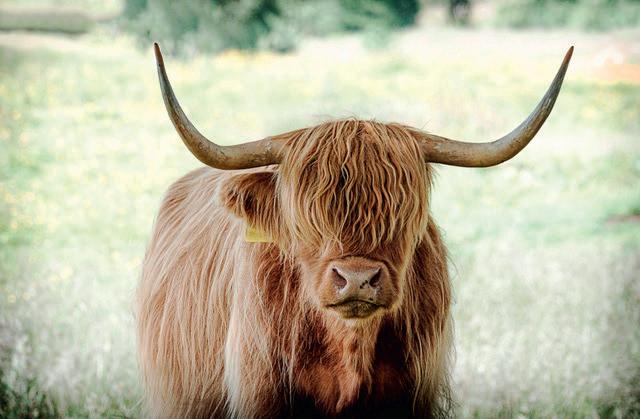
5 minute read
West Coast Wildlife


Advertisement
if you’re looking for an incredible, up-close wildlife encounter, the west coast is the habitat to explore.
Tread lightly, and keep your eyes and ears open, and you could be treated to a glimpse of something remarkable; the majestic antlers of a red stag grazing in a woodland, the turquoise fl ash of a kingfi sher darting across a river, or perhaps the imposing silhouett e of a white-tailed eagle, dominating the sky above.
Whether on land, at sea, or gazing upwards, this rich landscape is home to a staggering variety of species, and while you may be lucky to spot an endangered animal like a capercaillie, or a wildcat among the pinewoods, some of our more common creatures can put on breath-taking displays too - it’s hard not to smile at the nut-gathering antics of red squirrels, or marvel at the bravado of a gannet plunging into the waves.
Don’t forget to take time to look for tiny treats as well, from the beautiful butt erfl ies, dragonfl ies and newts, to native fl owers including harebells, iris and several varieties of orchid.
All you really need for a rewarding day’s wildlife-watching is patience, and perhaps a fi eld guide and a pair of binoculars, but it is always worth taking advantage of local knowledge and asking your hosts about the nature on their local patch - and where to go for the best chance of a sighting.
Th ere is never a guarantee, especially with Scotland’s unpredictable weather, but your odds of seeing something special can be improved if you adventure alongside an expert. Th ere are plenty of wildlife tour options here, from boat trips with skippers who specialise in scouring the horizon for dorsal fi ns, to tours tailored to the local star species -- sea eagles on the Isle of Mull, and beavers at Barnluasgan, near Lochgilphead. For keen wildlife photographers, specialist tours are also available.
Please bear in mind how sensitive these habitats are, and wherever possible, keep to paths and watch without causing any disturbance, especially during breeding times. Litt er is a hazard that causes injury to too many of our precious wild creatures -- please take care not to leave anything behind.
For more information about Scott ish wildlife and what to look out for, head for one of these websites. Scott ishwildlifetrust.org.uk. Woodlandtrust.org.uk. Nature.scot AUTUMN NATURE NOTEBOOK
As the nights draw in and the chill returns to the air, many of our species are busy preparing for the winter. It’s a special time of year, and one of the best for wildlife watching. Here are some Autumn treats to be looking - or listening - out for.
Roaring Stags: Red deer stags bellow, or roar, during the mating season, which is also known as the rut. From September to November, these echoing calls can be heard from heath and woodland across the region. It’s thought that stags roar as a way of demonstrating their size and strength to the competition.
Red Squirrels: Autumn is an active time for this quirky family favourite, as they busily harvest a bounty of nuts and berries before the scarcity of winter. Th ree quarters of the UK population of red squirrels is found in Scotland. Th ey’re oft en sighted in hazel woodlands, or at garden bird feeders.
Wintering Geese: From mid-September, Scotland’s skies and farmlands play host to an army of geese, who arrive in their thousands from breeding grounds in Greenland and Iceland. Visiting species include pink-footed, white-fronted and barnacle geese. Watch them sett le and methodically graze a fi eld en masse, or look up to enjoy striking formations in the sky.
Grey Seal Pups: Autumn is the haul out, or breeding season for grey seals, one of Scotland’s two seal species (the other is the common or harbour seal) and can be a wonderful time to spot adorable, fl uff y white newborns. Enjoy the sight through binoculars, or from the distance of a vehicle or boat. It is important not to cause distress by approaching seals during this time. Autumn Leaves: Scotland’s autumn forests don’t just boast red and gold -- there are greens, browns, auburns, maroons and mustards in every conceivable shade to enjoy. Wrap up warm, take your camera and head out for a stroll to appreciate a glorious display that is repeated right across Argyll and its islands. MY TOP TIPS FOR CRACKING SCENIC PHOTOGRAPHY BY GORDON NICOL
Each issue, Holiday West Highland asks a local expert to share three tips for visitors. Th ese could be places to go, or things to see, do, or taste.
Our Autumn expert is Gordon Nicol, a photographer and guide who helps holiday-makers to get the best out of their photos and their experience. His tours build skills, introduce hidden gems and off er new perspectives on ench anting locations.
Gordon shares three destinations that are perfect for photographers looking to get great landscape shots. Find out more at gordonnicolphotography.com THE SLATE ISLANDS: Just a few miles from Oban, these atmospheric islands off er a great deal for the photographer whether your interest is landscape or social history. You can see the impact of quarrying and how the industry has changed the landscape. Taking a foot passenger ferry to the more remote islands is like stepping back in time. A GLEN LONAN ROAD TRIP: Take the back road from Connel to Taynuilt, known as the Glen Lonan Road, for a wonderful single-track road trip on which the scenery changes from cultivated farmland to river, heath - and in this direction, statuesque views of Ben Cruachan. If animal photography is your interest, you’ll also get some lovely shots of Highland cows - do keep a sensible distance away.
CASTLE STALKER FROM JUBILEE
BRIDGE: Castle Stalker is a must-see for landscape photographers, but most visitors approach it from the cafe car park or boat house. For a fresh perspective, head towards Appin and approach across the marshland and the Jubilee Bridge. You’ll see lots of sea birds and marshland birds, and this view is best to set the castle against the light.











